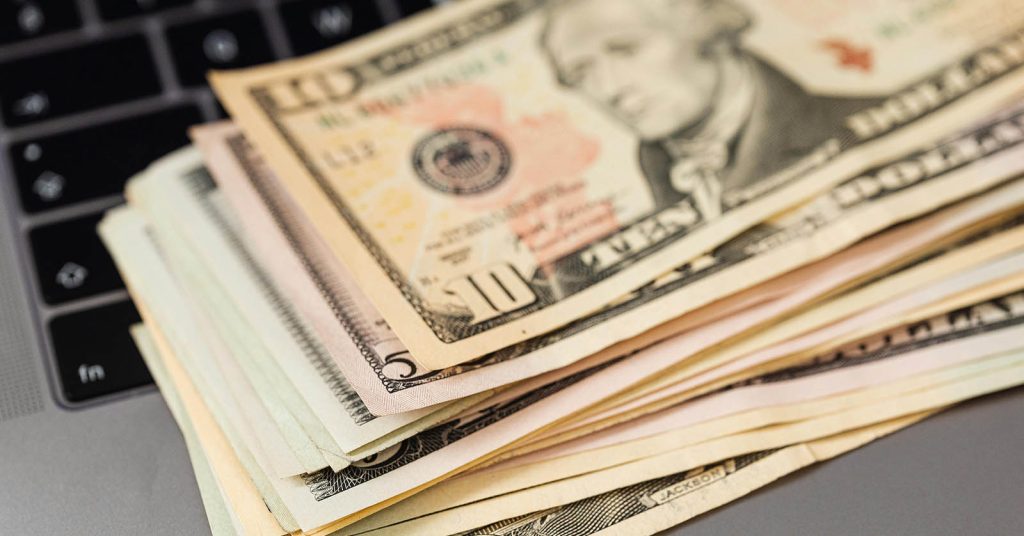Borrowing can solve a short-term problem or create a long-term one — it depends on the order you try options and how well you manage fees and risks. This guide puts the lowest-cost, most transparent choices first (payment plans with your provider, 0% balance transfers with a payoff plan, small personal loans from credit unions), then covers “special-case” tools (HELOC/HEL, 401(k) loans). It also explains what to avoid (payday, title, and most “debt settlement” pitches) and why. In 2025, Buy Now, Pay Later (BNPL) is also changing: several providers now report data to credit bureaus, and visibility will keep expanding; late BNPL payments and collections can still hurt you. Below you’ll find a prioritized playbook, clear yes/no rules, practical examples, and a 30-day plan to borrow safely and pay it back without unnecessary penalties.
Key Takeaways
- Start with low-cost, transparent options: payment plans with your creditor or provider, 0% balance transfers with a strict payoff schedule, and small personal loans via credit unions (including PALs).
- BNPL in 2025: some providers now furnish data to credit bureaus (e.g., Apple Pay Later, Affirm) and TransUnion is enabling POS data in core files; scores may not reflect it yet, but visibility is rising — and late payments/collections still damage credit.
- Home equity = lower rates, higher stakes: HELOC/HEL can be cheaper but you’re pledging your house and HELOCs are often variable; lines can be frozen or reduced.
- 401(k) loans only in narrow cases: strict limits (50% of vested balance or $50,000), usually five-year terms; job changes can trigger a taxable “deemed distribution.”
- Avoid: payday and title loans (very high APRs; repossession risk), and most “debt settlement” schemes (credit damage, fees).
1) Start Here: Ask Your Creditor or Provider for a Payment Plan
The safest “loan” is the arrangement you make directly with the source of the bill — a medical provider, utility, school, landlord, or even your current credit card issuer. Many organizations offer formal hardship programs or informal payment plans that spread costs with low or no interest, and you’ll usually get better terms the earlier you ask. Call, explain your situation briefly, and make a concrete request like “Can we split this into six monthly payments with no late fees if I enroll in autopay?” Then ask for the agreement in writing so you can refer to exact dates and amounts. With credit cards, specifically request their hardship program or “loss-mitigation options,” which can include temporary APR reductions, waived late fees, or a fixed payment plan. If you’re already behind, ask whether they’ll re-age the account after three on-time payments so the status returns to current. Keep a single spreadsheet with due dates, amounts, and contact names so nothing slips. If a representative says “we don’t do that,” thank them and call again — a different rep or department often has more tools. As a rule of thumb, try to solve the problem where it started before opening a brand-new account with brand-new fees. If you’re considering debt consolidation instead, always compare the total cost across the full payoff period; a lower interest rate can backfire if you stretch payments and pay more overall.
2) 0% Balance Transfer — Great If You Have a Plan and Discipline
A 0% intro APR balance transfer for 12–21 months is one of the cheapest ways to “borrow” to eliminate expensive card debt, but it only works if you treat it like a project with an end date. Most cards charge a balance transfer fee of about 3%–5%, so bake that into your math upfront rather than pretending it’s free. Build a backward plan by dividing the transferred balance plus the fee by the number of promo months and then autopay that amount each month. Disable new spending on the transferred card so your progress is visible and you don’t lose the grace period on purchases. If the issuer offers you a lower credit line than expected, transfer only what you can retire inside the promo window and keep paying down the rest on the original card. Watch for gotchas like losing the promo if you miss a payment or if a cash advance sneaks in and accrues interest immediately. If you’re juggling multiple balances, consider two mini-transfers rather than one big one to avoid maxing a single line; utilization spikes can move your score. Put the promo end date and a reminder 60 days earlier on your calendar so you can adjust if needed. When the balance hits zero, close the loop by moving your autopay to savings instead of letting the cash “disappear” in day-to-day spending.
3) Credit Union Personal Loans (incl. PALs): Fair Small-Dollar Credit
Credit unions are member-owned and typically price small personal loans more fairly than many online lenders, which makes them an excellent next stop if a payment plan or transfer won’t solve it. Ask about Payday Alternative Loans (PALs) if you need a small, short-term amount; PAL I has a regulated cost ceiling, making it a safer substitute for payday products. Request an all-in APR quote, not just a rate, so origination and any monthly fees are included. If you can set up direct deposit or autopay, you may qualify for a rate discount — ask explicitly. Keep the term as short as you can manage while keeping cash flow stable; stretching an inexpensive loan too long raises total cost. If you’re rebuilding credit, on-time payments with a credit union can help you establish positive history, and some institutions report to all three bureaus. Compare at least two local credit unions and one community bank so you see real differences in underwriting. If you don’t qualify today, ask which specific factor blocked approval (DTI, thin file, utilization) and what target would flip the decision. Then schedule a 60-day revisit so this becomes a plan, not a dead end.
4) BNPL (Buy Now, Pay Later): More Visible in 2025 — Use Sparingly
BNPL can be helpful for predictable, budgeted purchases, but it’s still credit, and stacking multiple plans can quietly strain your cash flow. In 2025, several providers furnish data to credit bureaus, and bureau infrastructure for point-of-sale loans is expanding; even if many scores don’t fully count BNPL yet, late payments and collections behave like any other derogatory item. Treat BNPL like a short installment loan with a fixed payoff and never run more than one at a time. Before you click “pay-in-4,” confirm: the exact due dates, whether autopay is required, what happens after a failed payment, and whether late fees compound. If you return an item, track the merchant’s refund timeline and the BNPL provider’s adjustment policy so you don’t end up paying installments for something you no longer own. For subscriptions or consumables, avoid BNPL entirely — it’s easy to over-consume and end up with overlapping plans. Add each BNPL due date to your calendar the moment you check out; a five-minute habit prevents most late fees. If you’re already juggling two or more BNPLs, stop taking new ones until the oldest is cleared, then rebuild your buffer with a dedicated “small purchases” sinking fund.
5) HELOC/HEL: Cheaper Money, But Your House Is on the Line
Home equity loans (HEL) and lines of credit (HELOC) often carry lower rates because they’re secured by your property, which makes them useful for larger, predictable needs — but the collateral risk is real. With a HELOC, rates are typically variable, so your payment can rise when market rates do; limits can also be frozen or reduced if home values fall or your finances change. Before you sign, run a “worst-case” test: what happens to the payment if the rate climbs two points, and could you still afford it if your income dipped for three months? For renovations, compare the expected value added to your home against the total borrowing cost so you’re not just moving expenses around. If consolidating card debt into home equity, put a spending freeze in place for 90 days and close or reduce the limits on cards you’ve consistently maxed — otherwise balances can creep back while you’ve put your house at risk. Read the Truth-in-Lending disclosures for margin, lifetime caps, draw period, repayment period, and all fees. If you’ll need funds once, a fixed-rate HEL can be simpler than a revolving HELOC. Finally, keep emergency savings separate so a home repair doesn’t force you to draw more at the worst moment.
6) 401(k) Loans: Last-Resort “Bank of You” With Fine Print
A 401(k) loan feels comfortable because you’re “borrowing from yourself,” but the trade-offs deserve a slow read. The general limit is up to 50% of your vested balance or $50,000, and most plans require repayment within five years unless the loan is for a primary residence. If you leave your employer, any unpaid amount can be treated as a deemed distribution, which may be taxable and penalized depending on age and timing. You also miss market growth on the borrowed amount; if markets rise while your cash is out, that opportunity cost can exceed the interest you “pay yourself.” Payments are after-tax, and when you withdraw in retirement you’ll likely pay taxes again on the same dollars, which complicates the “I’m paying me” story. If you do proceed, keep the term as short as possible and set autopay through payroll so misses don’t snowball. Avoid taking a 401(k) loan to pay off revolving debt unless you’ve already fixed the spending pattern that created the balances. Compare this option last, after payment plans, balance transfers, and fair-priced personal loans have been exhausted and a home-equity solution isn’t appropriate.
7) When It’s a Debt Emergency: Skip “Debt Settlement,” Consider NFCC/DMP
“Debt settlement” marketing often promises big reductions, but most programs require you to stop paying while they negotiate — fees and interest stack up, lawsuits are common, and the credit damage can follow you for years. A safer first line in a genuine emergency is nonprofit credit counseling through an NFCC-member agency. If appropriate, they can set up a Debt Management Plan (DMP): one monthly payment sent to the agency, interest rate reductions negotiated with card issuers, and a structured path to zero without “intentional default.” Before you sign any contract, compare total fees, expected timelines, and how progress will be reported on your credit. Ask whether your accounts will be closed, what happens if a creditor doesn’t participate, and how quickly proposals go out. If your situation is primarily high-rate cards with steady income, a DMP is often simpler and safer than settlement. If your situation involves unemployment or medical hardship, ask each original creditor about hardship programs alongside the DMP discussion. And if a settlement firm claims “guaranteed” results, that’s a red flag — press for written, creditor-by-creditor terms or walk away.
What to Avoid if You Want the “Safest” Borrowing Path
Payday loans: a typical two-week loan charging $15 per $100 equates to ~391% APR, and rollovers trap many borrowers. Auto title loans: similar costs with the added risk of losing your vehicle if you fall behind — repossession is common in single-payment title products. Most “debt settlement” offers: high fees, stalled payments, and credit damage without guaranteed net savings after fees and taxes. Repeat overdrafts and high-fee cash-advance apps: small amounts add up and can be more expensive than you think. If you need quick small-dollar funds, try a PAL from a credit union or a hardship/payment plan with your creditor before touching these products. And if a pitch sounds like easy money with no trade-offs, slow down — legit options explain risks in writing.
30-Day Borrowing Plan (Minimize Risk, Minimize Cost)
Days 1–3: call creditors/providers (utilities, medical, landlord) to request hardship/payment plans and get terms in writing; add all due dates to your calendar.
Days 4–7: if card debt is the issue, price a 0% balance transfer (include the 3%–5% fee), divide by promo months, and set “autopay to zero.”
Days 8–10: compare a credit union personal loan or PALs; choose the shortest term you can safely afford and enroll in autopay for a rate discount if offered.
Days 11–15: if using BNPL, limit yourself to one plan at a time, calendar each due date, and avoid consumables/subscriptions.
Days 16–20: for larger needs, consider HEL/HELOC and run a worst-case payment test; if you consolidate, freeze card spending for 90 days.
Days 21–30: if things are severe, book a nonprofit counseling session and evaluate a DMP instead of settlement; update your spreadsheet and reminders so next month starts clean.
Frequently Asked Questions (FAQs)
Are BNPL plans “invisible” to credit?
No. In 2025, several providers furnish BNPL data to credit bureaus, and infrastructure for point-of-sale loans is expanding. Even when scores don’t fully count BNPL, late payments and collections still hurt like any other derogatory item.
Is a 401(k) loan risk-free since I’m “paying myself”?
No. You face statutory limits, usually a five-year repayment window, potential taxable deemed distributions if you leave your job with a balance, and the lost market growth on borrowed funds. It’s an emergency tool, not a first-line option.
Is consolidation always a good idea?
Not always. Fees and longer terms can raise total cost. Run the full payoff math, include all fees, and pair consolidation with a spending freeze so balances don’t creep back.
Best quick alternative to payday?
PALs through a credit union or a hardship/payment plan with your creditor; both are more transparent and usually far cheaper than high-cost short-term loans.
Sources
- CFPB — Balance transfer fees & 0% offers
- CFPB — Considering credit card consolidation
- NCUA — PALs Final Rule (PAL I max 28% APR incl. finance charges)
- NCUA — Federal CU 18% rate ceiling (extended)
- CFPB — HELOC brochure (variable rates; freeze/reduce lines)
- CFPB — Payday APR math (~391%)
- CFPB — 1-in-5 title borrowers lose vehicle
- IRS — 401(k) loan FAQs (50%/$50k)
- IRS — Deemed distributions (participant loans)
- Experian — Apple Pay Later data on credit reports
- Affirm — Expands reporting to Experian (all pay-over-time)
- TransUnion — POS/BNPL data in core file (initial score shielding)









